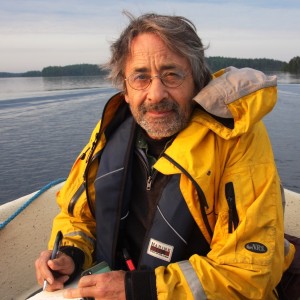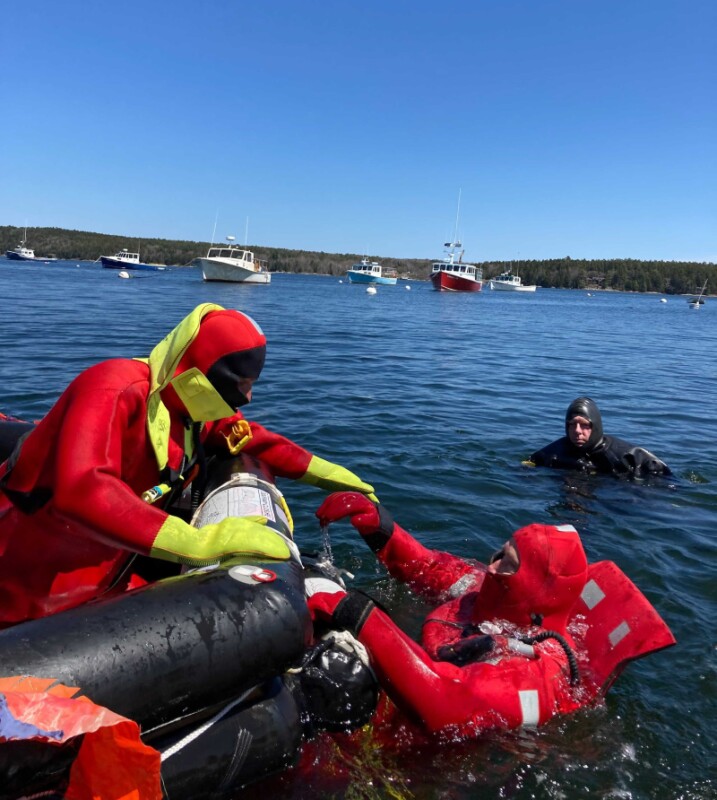AMSEA, the Alaska Marine Safety and Education Association, has issued a mayday call of its own as new funding cuts and reorganization under the Trump administration threaten to end safety training credited with saving lives.
"Almost all our funding comes from NIOSH (National Institute for Occupational Safety and Health),” says AMSEA executive director, Leann Cyr, Ph.D. “And NIOSH has been effectively dissolved and most its employees fired, including Jennifer Lincoln. (A 2021 National Fisherman Highliner).” Pointing out that the number of fishermen deaths has steadily declined since AMSEA began conducting safety training courses, Cyr contends that cutting the program will inevitably cost lives. “When AMSEA’s commercial fishing safety program began in 1985, 250 fishing vessels and 75 fishermen’s lives were lost each year,” she says in an AMSEA blog. “Forty years later, with hundreds to thousands trained annually by AMSEA in marine safety and survival, in collaboration with dedicated USCG efforts, fatalities have been lowered by over 80 percent. Vessels still experience many capsizes and vessel disasters; however, fishermen now survive these emergencies daily.
"It was a dark time in Alaska before this training,” says Cyr. “And we don’t want to go back there. Teaching people how to get into a survival suit in under 60 seconds, how to get into a life raft, make a MayDay call, and other emergency preparedness skills has obviously saved lives."
When the crew of the groundfish trawler Three Girls abandoned ship in August 2024, 100 miles east of New Hampshire, they had recently been through a safety training that enabled them to get off in good order and be rescued promptly, saving the Coast Guard considerable time and money. “Right now, we have funding for our Alaska programs until July 1,” says Cyr. “And funding for national programs until September 1. After that, these trainings will go away.”
Cyr notes that not only will the lack of safety training put lives at risk, but it will also interfere with normal fishing operations. “Fishermen will be stuck at the dock,” she says. “If they can’t get a drill conductor to perform monthly drills and get their safety sticker every two years, the Coast Guard can hold them at the dock.”
Losing NIOSH also means the loss of safety research that has been recognized globally. “NIOSH is the only agency doing that research,” says Cyr, pointing out that NIOSH has managed the database that tracks commercial fishing fatalities since 2000. “Without that data, we can’t see new trends by region or fishery in causes of vessel disasters and other fishing deaths, which numerous programs use to inform training and education,” says Cyr.
Besides AMSEA, NIOSH also administers $6 million in U.S. Coast Guard training grants, which help fund the Fishing Partnership in New England and Ag Centers nationally and conduct research and outreach. The popular Life Jackets for Lobstermen program, for example, was developed by the Northeast Ag Center and grew out of earlier AMSEA work on life jacket design.
"There’s a lot more behind that $6 million number as you know,” says Dan Orchard, vice president of Fishing Partnership. “Jennifer Lincoln and her staff at NIOSH have saved the lives of countless fishermen. Not through onerous regulations but by helping fishermen use their own innovation to make their working deck safer and by helping them develop safety training programs that are realistic.” Orchard points out that the money also paid for free trainings, free lifejackets, free first aid kits, and more. All are designed by fishermen for fishermen. “How many fishermen came home to their families because of NIOSH’s work over the years?” asks Orchard. “And in terms of return on investment, they saved millions in search and rescue, recovery, and salvage costs. This is a major loss to our fishing industry.”
Whether the dissolution of NIOSH holds depends on the political forces applied on the Trump administration. “We have a letter, Friends of NIOSH, that has been sent out for signatures of Senators, Representatives, and other stakeholders,” says Cyr. “That has been sent to high ranking members of Congress.” AMSEA also invites fishermen to share their stories on the importance of safety training here.







